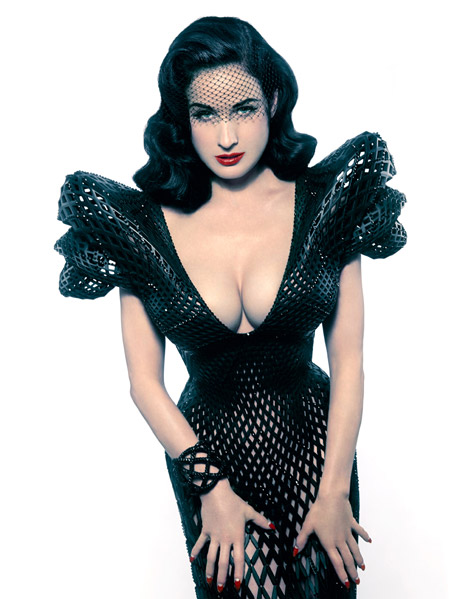3D printing of textiles – part 1. Haute Couture and technical challenges
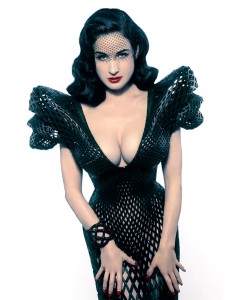 3D printing is a technology hype. 3D printers can print almost anything from car and airplane parts, toys and even food. The number of industries utilizing 3D printing is expansive, covering everything from aerospace and defense to automotive, healthcare, entertainment, consumer and architecture.
3D printing is a technology hype. 3D printers can print almost anything from car and airplane parts, toys and even food. The number of industries utilizing 3D printing is expansive, covering everything from aerospace and defense to automotive, healthcare, entertainment, consumer and architecture.
Scientists started printing human hearts[1] and ESA, the European Space Agency, is seriously thinking about 3D printing a space station on the moon[2]
3D printing is seen as potential technology breakthrough that may radically change manufacturing processes in many industries, put whole business models at question and create new ones. However, in textile manufacturing 3D printing is still at a tiny niche and exploratory stage. The textile industry, is a mature and cost efficient global manufacturing industry.
Undoubtedly, 3D printing of textile would be a radical change of the traditional textile manufacturing techniques, for spinning & weaving as well as for the colouration industry. Not to speak about the production as a whole. Since there is hardly any more labour and much less waste, 3D printing of customized fashion would probably be in Europe and America´s textile print shops, creating new business models, rather than textiles manufacturing in industrial suburbs of China and India.
And while 3D printing will most likely influence fashion through homemade gadgets and through designers´ blogs, real revolutionary stuff is happening in Haute Couture, and some innovative start-ups have entered the scene.
Some of the highlights include
- Victoria´s Secret model started wearing 3D printed wings [3]
- 3D-printed dress for the icon burlesque dancer Dita Von Teese[4], created by designer Michael Schmidt and architect Francis Bitonti
- Iris van Herpen, a Dutch fashion designer, created a 3D printed dress[5] based on a multimaterial 3D-printing technology, allowing a variety of material properties, both hard and soft, In 2011 the famous TIME Magazine named Iris van Herpen’s 3D printed dress one of the 50 Best Inventions of the year 2011
- Continuum´s 3D printed bra[6] is made from nylon 12, and claimed to be “the world’s first ready-to-wear, completely 3D-printed article of clothing”, created by the SLS (selective laser sintering) 3D printing process. All of the pieces, closures included, are made directly by 3D printing and snap together without any sewing.
- Titanium 3D printed shoes[7] by designer Bryan Oknyansky, as well as an entire line of fully customizable 3D printed chunky platform high heels made from eco-friendly bioplastic. Consumers can have a truly custom shoe made for them in different colours.
- Tamicare´s Cosyflex, high-end fashionable, disposable hygiene products and underwear. Cosyflex is a hybrid shape retaining nonwoven structure of at least two layers, based on a unique combination of natural elastomer (rubber-latex polymers) and cellulose fibres (“various types of liquid polymers such as natural latex, silicon, polyurethane and teflon, as well as variety of textile fibres such as cotton, viscose and polyamide”) to build up the fabric/product while using Tamicare’s unique forming process[8]. There are reports about talks with Victoria’s Secret about 3D printing 10 million pairs of knickers a year for the US lingerie giant[9],[10]
- Shapeways: 3D printed plastics fashion, such as bow ties, bags, purses, belts[11]
- Electroloom´s first 3D printer to print out comfortable sets of clothes. 3D printed shirts are still prototypes and the company is still testing its printer[12], , Electroloom is expected to launch their personal 3D printer for clothing by end of 2014[13].
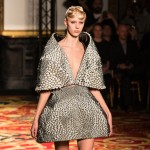 |
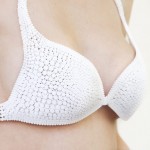 |
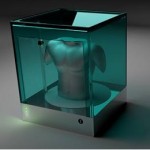 |
| van Herpen’s 3D printed dress | Continuum´s 3D printed bra | Electroloom 3D printer prototype to print out clothes |
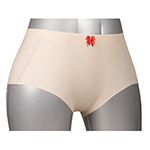 |
 |
 |
| Tamicare: Cosyflex | Titanium 3D printed shoes | Shapeways: 3D printed plastics |
But for mainstream textiles there are still many limitations. 3D printed clothing is still years from entering the mainstream.
Just comparing cost: A t-shirt can be produced conventionally for less than 3 dollars, a 3D printed article would be probably priced some orders of magnitude higher.
Advantages of 3D printed textiles are perfect fit to the wearer´s body especially for shoes, underwear and tight bodywear. The customization may include use of a consumer’s measurements, 3D body scanning data, style, color, design, and decoration preferences, for example. This customisation is achieved by using 3D scanning technology and the ability to produce (3D print) individual articles, in contrast to mass production in the textile industry.
The presently available materials and the (still) very high cost of printed textiles, respectively low productivity, are limitations compared with conventional textile production technology. But 3D printing is very interesting for individual customized articles, perfectly fit for consumers demands.
Materials must be sufficiently stable during 3D printing process which involves melting at elevated temperatures and laser sintering. Common materials used in 3D printing include ABS plastic, PLA (polylactic acid), nylon (polyamide), glass filled polyamide, epoxy resins, metals (such silver, titanium or steel), wax, photopolymers, polycarbonate, and more.
In contrast to polymer fibre material, the largest natural fibres such as cotton, a poly carbohydrate, are not well suitable (yet?). In the open innovation platform Innocentive recently a challenge was raised to solve the technical issues related to 3D printing of cotton[14].
The difficulty with natural fibres such as cotton is obviously that it does not melt, instead “at elevated temperatures, cotton decomposes instead of melting. Long exposure to dry heat above 300°F (149°C) causes cotton fibers to decompose gradually, and temperatures above 475°F (246°C) cause rapid deterioration.”[15]
Interesting in the context is the technology of Tamicare (see above) who claim to process even cotton already for their nonwovens . According to their patents disclosures, they spray polymer liquids, but if and how cotton can be processed requires further research.
The above examples are only a small glimpse of the already available and known products and trends. In future articles we will look closer at the emerging technology solutions in 3D printing of textiles. We will present the common 3D printing technologies and discuss how to overcome some of the obstacles for 3D printing of textiles.
We will try to answer the questions: Can 3D printing really play a serious role in textile manufacturing?
To be continued.
[1] Scientists to 3D Print a Human Heart
[2] ESA tested 3D drucker für den Bau einer Mondbasis
[3] This Year, the Victoria’s Secret Models Sport 3-D Printed Wings:
[4] 3D-printed dress for Dita Von Teeseby Michael Schmidt and Francis Bitonti
[5] Iris van Herpen : PRINTABLE COUTURE, http://www.irisvanherpen.com/
[6] N12 3D-printed bikini by Continuum Fashion and Shapeways, http://continuumfashion.com/N12.php
[7] Bryan Oknyansky’s 3D Printed Shoes Step Closer to Vogue Recognition
[8] Tamicare to scale up 3D printed disposableshttp://www.innovationintextiles.com/tamicare-to-scale-up-3d-printed-disposables/
[9] Could Victoria’s Secret 3D PRINT its underwear? Lingerie giant in talks with firm that could make 10 million knickers a year
[10] 3D Printing: A real alternative to knitted textiles?
[11] Shapeways: 3D printed plastics:
[12] Electroloom 3D Printer That Can Print Clothes
[13] Electroloom to launch personal 3D printer for clothing by end of 2014
[14] Innocentive Challenge: 3D Printing with Cotton Fiber, InnoCentive wants to weave cotton into 3D printing:
[15] Cotton Inc.: Cotton Morphology and Chemistry

